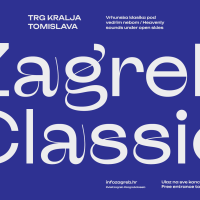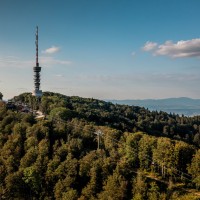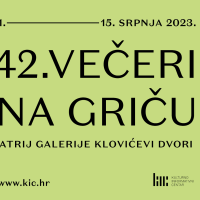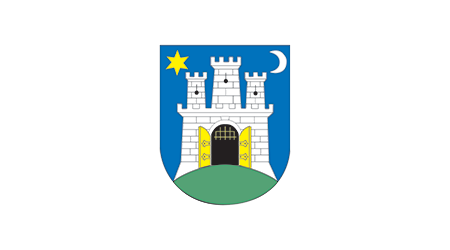Green, how I want you green
Life in the city of Zagreb would not be the same without the string of beautiful parks in the very heart of the city. If you want to take a break in the shade of sumptuous trees, enjoy the view of flowerbeds, take a stroll or visit an open-air gallery – the parks of Zagreb are ready for your visit.
 When you are in need of a break during a day of visiting museums and galleries, why not take a rest in one of Zagreb’s most beautiful parks. The string of city parks forms the so-called Lenuzzi’s Horseshoe, named after the horticultural planner who was the mastermind behind its design. From Ban Josip Jelačić Square the green lifeline continues on to the Railway Station, and then through the Botanical Gardens all the way to Marulić and Maršal Tito squares.
When you are in need of a break during a day of visiting museums and galleries, why not take a rest in one of Zagreb’s most beautiful parks. The string of city parks forms the so-called Lenuzzi’s Horseshoe, named after the horticultural planner who was the mastermind behind its design. From Ban Josip Jelačić Square the green lifeline continues on to the Railway Station, and then through the Botanical Gardens all the way to Marulić and Maršal Tito squares.
Zrinjevac Park, a famous promenade and gathering place for art lovers located in the very heart of the city, is one of the most romantic places in Zagreb.
The park bears the name of the Croatian Viceroy or Ban Nikola Šubić Zrinski. In its centre, there is a music pavilion where afternoon concerts and dance events were first organized in the late 19th century. Those events still take place from the spring to autumn, very much in the yesteryear fashion, and take us back to those nostalgic times. The same time machine that revives the promenade concerts for us will conjure up a uniquely romantic holiday atmosphere during the event Advent in Zagreb.
The nearby Botanical Gardens, where the Garden Pavilion has been recently renovated, boast as many as ten thousand species of plants from all over the world. One part of the Botanical Garden is designed in the fashion of an English landscape garden with paths meandering among the groups of freestanding trees and shrubs, whereas the other part is more formal in the sense that it follows the strict and symmetrical design of the French garden. A short walk leads from the Botanical Gardens to Marulić Square with the monument to the Croatian writer who it has been named after. The most prominent building in the square is a masterpiece of the Viennese Secession. It used to house the National and University Library and today it is the home of the State Archives of Croatia. The forest park Tuškanac is also in the very heart of the city and offers opportunities for rest, sport and recreation on its green slopes and leafy meadows at any time of the year. One of the most beautiful city parks is a little bit further but still in the very centre, east of the Cathedral, in the place of the one-time man made fish pond (ribnjak) which it has been named after. This is another oasis of peace that is popular with all generations.
Only a ten-minute ride by train from the main city square brings us to Maksimir, one of the first European landscaped public parks. When it was opened to public in the 18th century it was actually the first public promenade in southeast Europe. Skilfully combining features of a forest-park with those of an English landscape garden, it was a popular excursion place for the one-time inhabitants of Zagreb. Admittedly, the city was much smaller at the time, and the notion of distances was a bit different; still, the park’s popularity as an outing destination is linked to a historical event – in 1892 the first horse-drawn tram started maintaining a regular service to the park for all who wanted to be driven there. Since 1925, the park is also home to the City Zoo. The eternal charm of Maksimir Park is due to the three picturesque lakes on which swans and boats glide more or less gracefully, a pavilion and summer villas which are venues for musical events and the sculptures that are scattered all over the park.
In the western part of the city, close to new green neighbourhoods, are the equally attractive recreational and sports centres Jarun and Mladost and an even newer one, Bundek Lake, which provide endless opportunities for rest and recreation.
A favourite excursion spot for Zagreb’s citizens and their guests is Sljeme, the summit of the Medvednica mountain range which towers over Zagreb. In summertime, it provides shelter from the scorching heat of the city and offers recreational opportunities on its numerous mountain trails. In wintertime, it is a popular skiing and sleighing destination where world skiing competitions take place. On foot or by cable car, just for a day or a somewhat longer escape to the pleasant atmosphere of mountain lodges which offer accommodation and excellent food, Sljeme lures like a magnet, and the entire Medvednica range is yet another treasure trove of nature. Its higher slopes, extending over 228 square kilometres, have been proclaimed a nature park. Besides the numerous mountain trails, a natural attraction is Veternica Cave, one of the biggest in Croatia. The romantic atmosphere of Sljeme is enhanced by Medvedgrad, one of the biggest medieval burgs in Croatia. It was erected in the 13th century and after a recent renovation it has become the place where the Monument to the Unknown Defender of the State has become the symbol of Croatian statehood.
Published: 03.07.2013
 Hrvatski
Hrvatski English
English Deutsch
Deutsch Spanish
Spanish French
French Italian
Italian Russian
Russian Korean
Korean Japanese
Japanese Chinese
Chinese When you are in need of a break during a day of visiting museums and galleries, why not take a rest in one of Zagreb’s most beautiful parks. The string of city parks forms the so-called Lenuzzi’s Horseshoe, named after the horticultural planner who was the mastermind behind its design. From Ban Josip Jelačić Square the green lifeline continues on to the Railway Station, and then through the Botanical Gardens all the way to Marulić and Maršal Tito squares.
When you are in need of a break during a day of visiting museums and galleries, why not take a rest in one of Zagreb’s most beautiful parks. The string of city parks forms the so-called Lenuzzi’s Horseshoe, named after the horticultural planner who was the mastermind behind its design. From Ban Josip Jelačić Square the green lifeline continues on to the Railway Station, and then through the Botanical Gardens all the way to Marulić and Maršal Tito squares.









